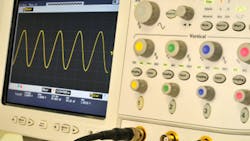Fiercely Independent in Making Measurements
Image courtesy of Thinkstock
During a recent visit to Analog Devices in Chelmsford, Mass. (the former Hittite Microwave facility) with Technical Editor Chris DeMartino, our hosts generously escorted us through a facility doing various levels of integration for military applications. The automated capabilities were impressive, including robotic chip and die placement machines, laser welders, and even gas leak detectors to verify the integrity of package seals. Of course, dedicated, hard-working people were interspersed among the machines, ensuring a smooth flow of production. What might have stood out the most during this factory tour was the amount of test equipment involved in making sure everything—from the integrated-circuit (IC) to the subsystem module—was working properly, and to the demanding requirements of DARPA and other defense customers.
What every editor writing about electronics technology dreams about is having their own test laboratory, and Chris suggested during the tour the idea of perhaps borrowing some of the “unused” test gear so that Microwaves & RF could set up its own test station to provide our observations on the “published specifications” provided to us when writing Product Features and other stories on RF/microwave hardware. In the past, a number of test-and-measurement manufacturers have been kind enough to provide “loaners” on their new test gear, such as a sensitive spectrum analyzer and antenna to connect to the input port that made it possible to “see” all the signal activity in my own neighborhood.
Much thanks to the generosity of these companies (including Keithley, for a voltmeter which was never returned). These were just short-term test capabilities, however, and what Chris had in mind was a permanent test lab that would be maintained within the Penton offices, and provide some basic capabilities—perhaps even to the level of a vector network analyzer (VNA) for making S-parameter measurements.
However, I remembered what a good friend, much wiser than me, Ulrich Rohde of Synergy Microwave Corp., once warned years ago when I tried to finagle some test equipment from him and his company: “You better be right.” It was simple advice, but it stopped me dead in my tracks concerning having an independent test laboratory and performing accurate measurements. Ulrich reminded me of the importance of calibration (even of maintaining precise, accurate test fixtures), that so many things could contribute to measurement errors, and that we would be accountable for anything we published regarding test results. If we were off by a few dB, it could be damaging to the reputation and business of the company that had sent us their component for review.
In particular, some measurements—such as oscillator and synthesizer phase noise—are extremely difficult to perform accurately and repeatably, and unaccounted-for noise sources within the test environment can throw those measurement results off by a huge margin. There is no suitable apology that can be offered to an oscillator supplier when these test results show phase noise that is 20-dB higher than the datasheet, and the measurements were made while a co-worker was warming their lunch in the microwave oven down the hall.
The independent test lab is a noble goal, however, and perhaps of great value to this industry when introducing products from a relatively new supplier without any kind of quality track record. We invite readers to provide your feedback on whether it is a good idea, or just wishful thinking.
About the Author
Jack Browne Blog
Jack Browne, Technical Contributor, has worked in technical publishing for over 30 years. He managed the content and production of three technical journals while at the American Institute of Physics, including Medical Physics and the Journal of Vacuum Science & Technology. He has been a Publisher and Editor for Penton Media, started the firm’s Wireless Symposium & Exhibition trade show in 1993, and currently serves as Technical Contributor for that company's Microwaves & RF magazine. Browne, who holds a BS in Mathematics from City College of New York and BA degrees in English and Philosophy from Fordham University, is a member of the IEEE.


